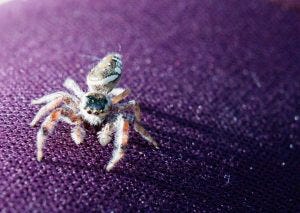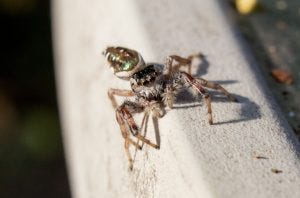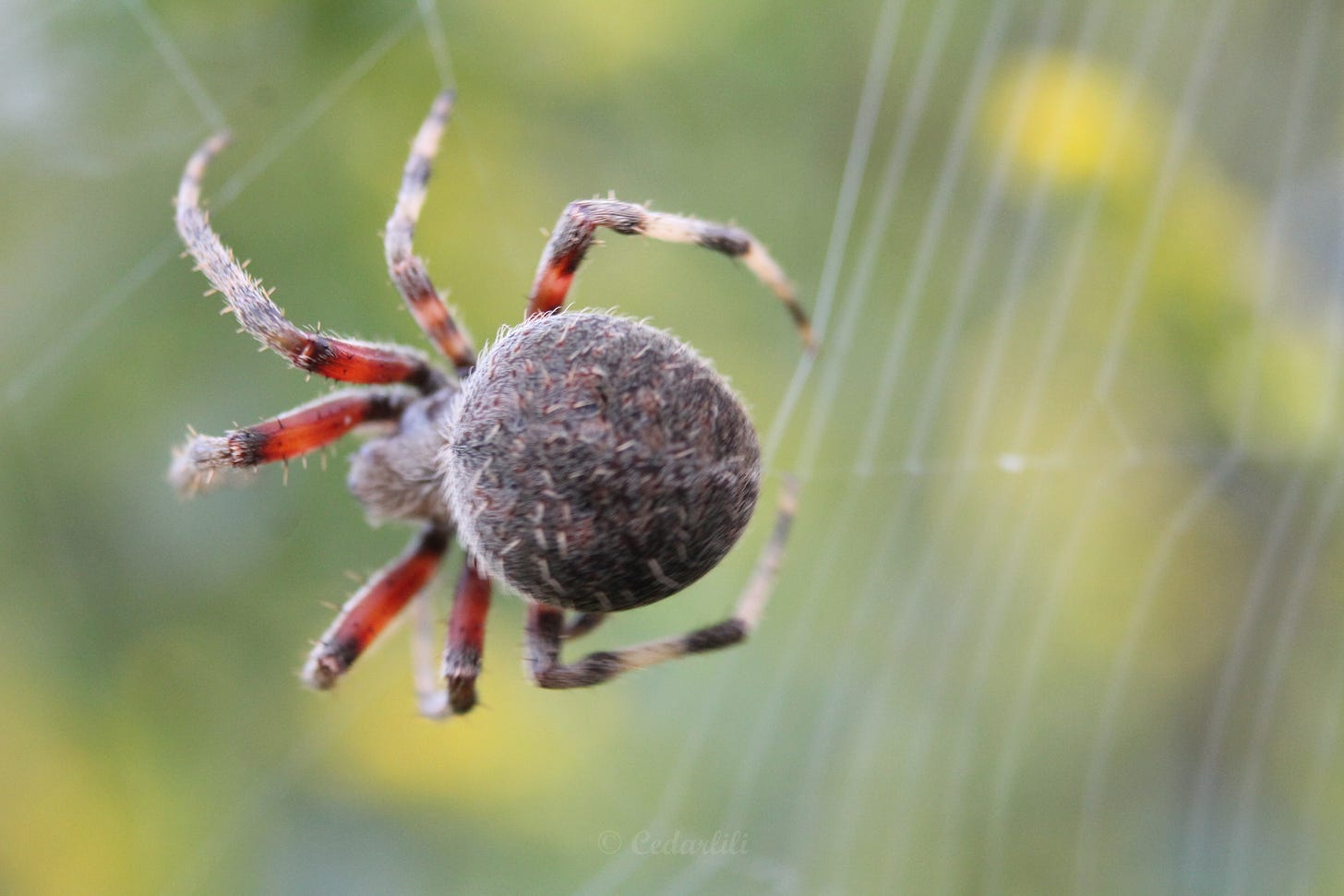Spidersilk
I read a pair of articles this week about spiders, their genes, venom, and silk. It was a fascinating glimpse into the little creatures I already am fascinated with. I had no idea how complex the arachnid genome is, much more than a human's. And untangling that genetic riddle could lead to advances in textiles, medicines, and more. Spider's silk is far more than the fabled 'stronger than steel' it is an enigma of genes, protein expression, and properties which industry covets.

Not all spiders use silk every day, like the jumping spiders.
Silk, in the sense that we usually think of it, is produced by silkworms, who are killed as part of the harvest process. Being able to produce silk from a vat, and furthermore, silk that could potentially serve as bulletproof armor in no greater thickness than ordinary clothing among other uses, is enough to make anyone's interest peak. Concept pieces, like a pair of shoes, and a parka, have been produced but as yet, no mass production is possible. The reason for this is that the proteins which are expressed to be formed into spider silk can be huge - and we can only produce tiny proteins from a vat, so far. The quest is on, then, to clone the genes that will allow us to express all the right components for silk.
Already, we can and do make some parts of spider silk, which is used in various ways, like cosmetics (to my amusement, the make-up industry is ancient, huge, and a driver of innovation. Who'd have thought?). However, being able to mass-produce silk, and use the strength, resilience, and even adhesion qualities could be huge. But first, we have to crack the riddle of the code, and that's a matter for money and huge computing power.

Fuzzy pedipalps are not actually fangs.
But wait, you say, you mentioned venom above. Spider venom? Really? Visions of black widows and brown recluses are probably making your skin crawl already. Applications for the venom - or compounds derived from it, which seem more likely - could include pain relief (the spider drugs their prey to remain still while they dissolve them internally, after all), or pesticides. While some spider venom can affect vertebrates, to include humans, most venoms are designed to kill the invertebrate prey of the spider, and we could harness that for crop protection.
Sure, they have more legs than people are comfortable, and more eyes, and oversized fangs. But spiders are amazing little creatures, with things to offer us which far outweigh our discomfort with having them around. You already knew I was an admirer, this just makes me wish I could join the ranks of arachnologists prying coded secrets out of the spider genomes.

This kind of silk is strong, but sticky to capture prey.




